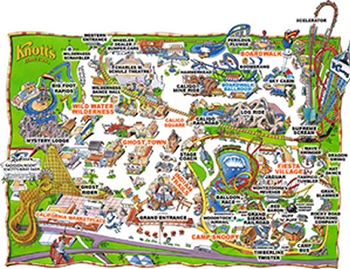Standards
Focus on Physical Science:
Motion
- The velocity of an object is the rate of change of its position. As a basis for understanding this concept:
a. Students know position is defined in relation to some choice of a standard reference point and a set of reference directions.
b. Students know that average speed is the total distance traveled divided by the total time elapsed and that the speed of an object along the path traveled can vary.
c. Students know how to solve problems involving distance, time, and average speed.
d. Students know the velocity of an object must be described by specifying both the direction and the speed of the object.
e. Students know changes in velocity may be due to changes in speed, direction, or both.
f. Students know how to interpret graphs of position versus time and graphs of speed versus time for motion in a single direction.
Forces
2. Unbalanced forces cause changes in velocity. As a basis for understanding this concept:
a. Students know a force has both direction and magnitude.
b. Students know when an object is subject to two or more forces at once, the result is the cumulative effect of all the forces.
c. Students know when the forces on an object are balanced, the motion of the object does not change.
d. Students know how to identify separately the two or more forces that are acting on a single static object, including gravity, elastic forces due to tension or compression in matter, and friction.
e. Students know that when the forces on an object are unbalanced, the object will change its velocity (that is, it will speed up, slow down, or change direction).
f. Students know the greater the mass of an object, the more force is needed to achieve the same rate of change in motion.
g. Students know the role of gravity in forming and maintaining the shapes of planets, stars, and the solar system.
Investigation and Experimentation
9. Scientific progress is made by asking meaningful questions and conducting careful investigations. As a basis for understanding this concept and addressing the content in the other three strands, students should develop their own questions and perform investigations. Students will:
a. Plan and conduct a scientific investigation to test a hypothesis.
b. Evaluate the accuracy and reproducibility of data.
c. Distinguish between variable and controlled parameters in a test.
d. Recognize the slope of the linear graph as the constant in the relationship y=kx and apply this principle in interpreting graphs constructed from data.
e. Construct appropriate graphs from data and develop quantitative statements about the relationships between variables.
f. Apply simple mathematic relationships to determine a missing quantity in a mathematic expression, given the two remaining terms (including speed = distance/time, density = mass/volume, force = pressure × area, volume = area × height).
g. Distinguish between linear and nonlinear relationships on a graph of data.

